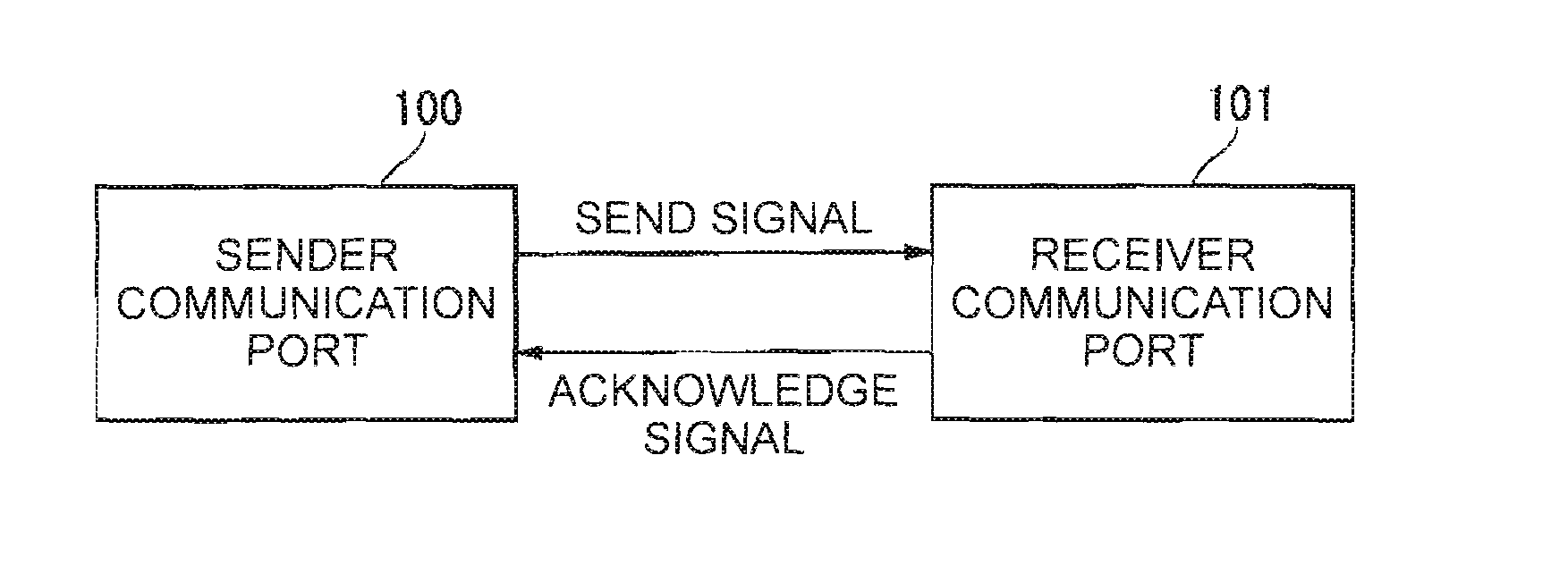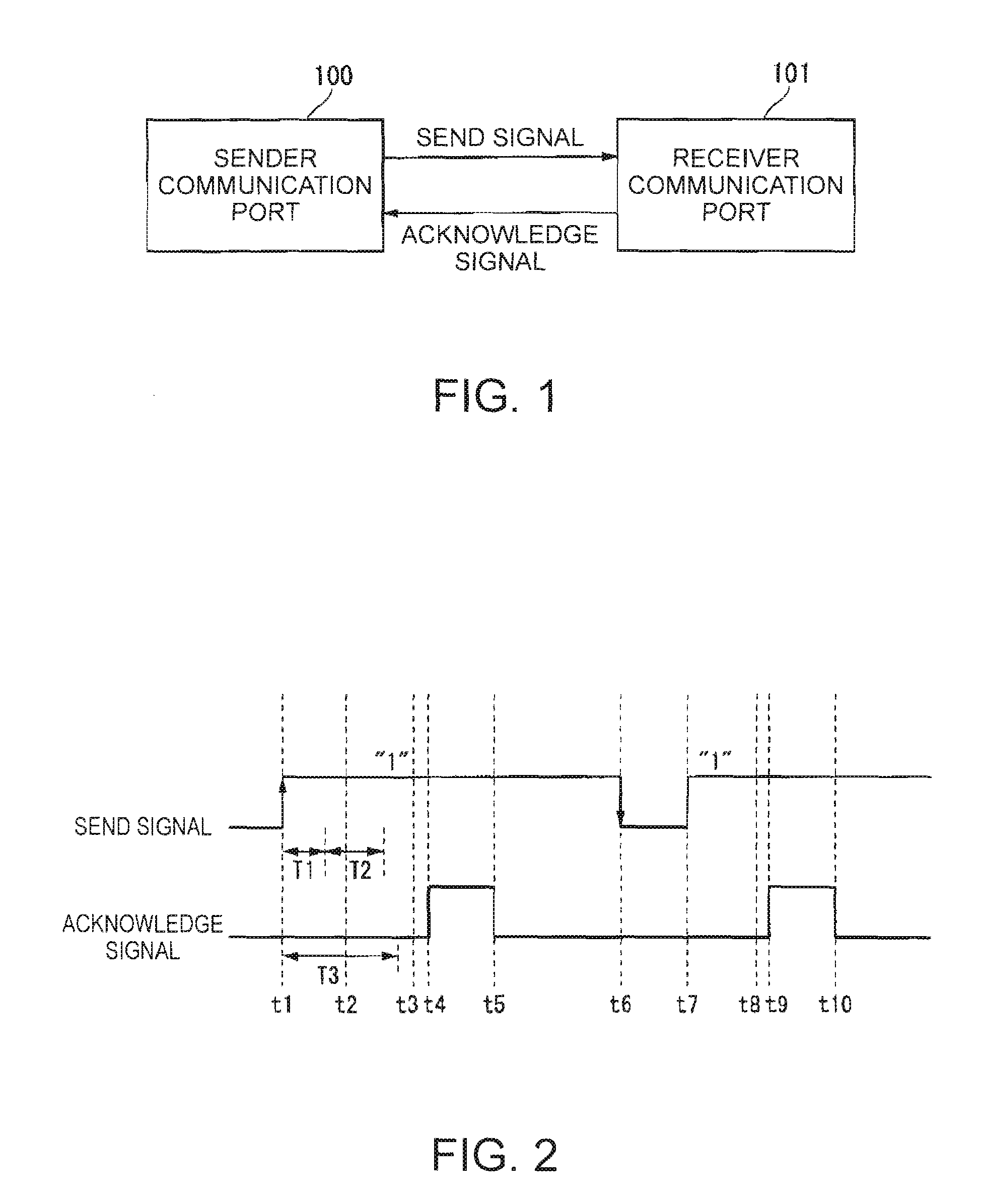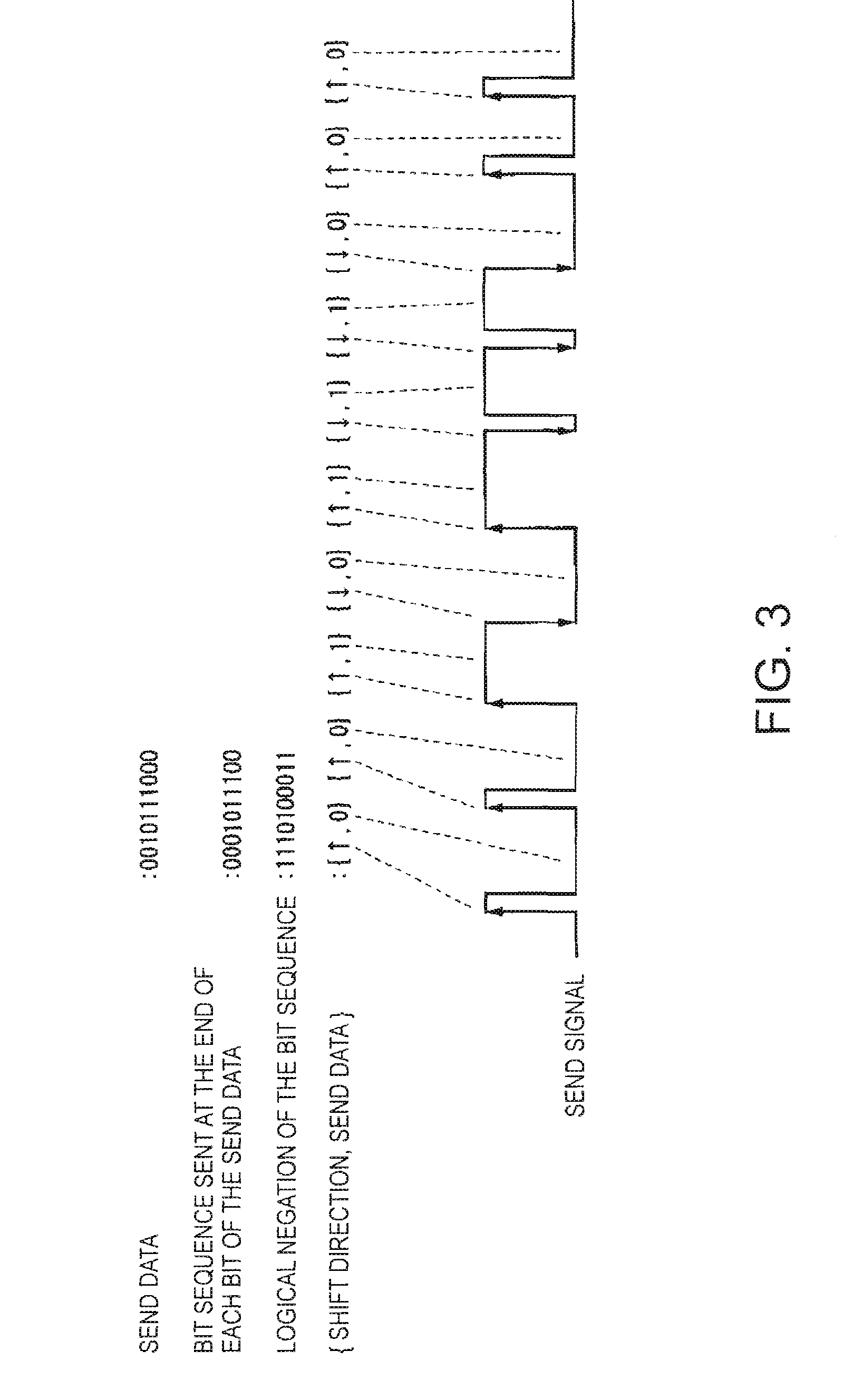Asynchronous serial communication method and asynchronous serial communication device
a serial communication and synchronous technology, applied in the direction of synchronisation signal speed/phase control, duplex signal operation, instruments, etc., can solve the problems of high-frequency clocking heat concentration and clock skew problems, reduce the overhead time, reduce the size of the circuit, and reduce the number of signal lines.
- Summary
- Abstract
- Description
- Claims
- Application Information
AI Technical Summary
Benefits of technology
Problems solved by technology
Method used
Image
Examples
first embodiment
[0065]FIG. 1 is a block diagram of an asynchronous serial communication device which performs communication in accordance with an asynchronous serial communication method according to a first embodiment of the invention.
[0066]Referring to FIG. 1, the reference number 100 denotes a sender communication port and the reference number 101 denotes a receiver communication port. The sender communication port 100 and the receiver communication port 101 are coupled each other through a data wire (a communication wire) that transmits a send signal and through an acknowledge wire that transmits an acknowledge signal. The asynchronous serial communication device is formed in this way.
[0067]In the asynchronous serial communication device, the sender communication port 100 sends a send signal to the receiver communication port 101. The receiver communication port 101 receives the send signal and sends an acknowledge signal to the sender communication port 100. The asynchronous serial communicati...
second embodiment
[0136]A second embodiment of the invention is now described with reference to FIG. 17.
[0137]FIG. 17 is a wave form diagram of the send signal and the acknowledge signal which are sent in accordance with an asynchronous serial communication method according to the second embodiment of the invention. FIG. 17 shows a send signal sent by the sender communication port 100 and a acknowledge signal sent by the receiver communication port 101.
[0138]The sender communication port 100 firstly shifts the signal level of the send signal from “0” to “1” (a predetermined level) (at time ti). At this point, the receiver communication port 101 detects the signal level shift of the send signal.
[0139]The sender communication port 100 retains the signal level “1” of the send signal for a predetermined time period (the first time period T1) or a longer time period, and it then transmits a 1-bit send data within a predetermined time period (the second time period T2). In the example shown in FIG. 17, the...
PUM
 Login to View More
Login to View More Abstract
Description
Claims
Application Information
 Login to View More
Login to View More - R&D
- Intellectual Property
- Life Sciences
- Materials
- Tech Scout
- Unparalleled Data Quality
- Higher Quality Content
- 60% Fewer Hallucinations
Browse by: Latest US Patents, China's latest patents, Technical Efficacy Thesaurus, Application Domain, Technology Topic, Popular Technical Reports.
© 2025 PatSnap. All rights reserved.Legal|Privacy policy|Modern Slavery Act Transparency Statement|Sitemap|About US| Contact US: help@patsnap.com



